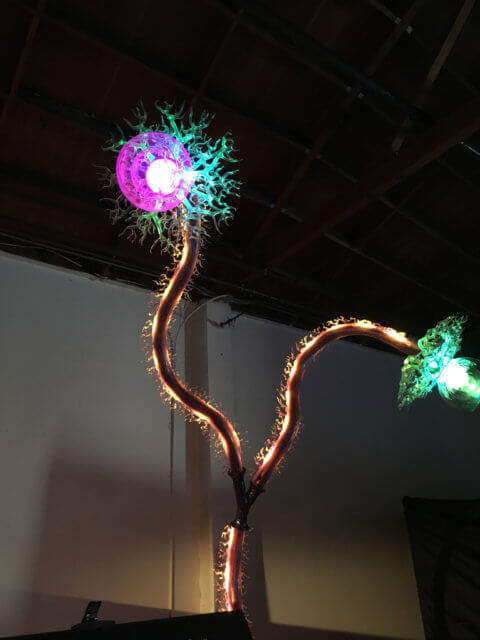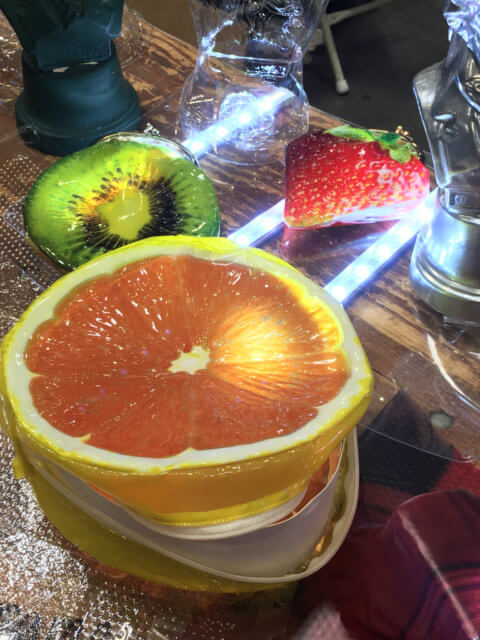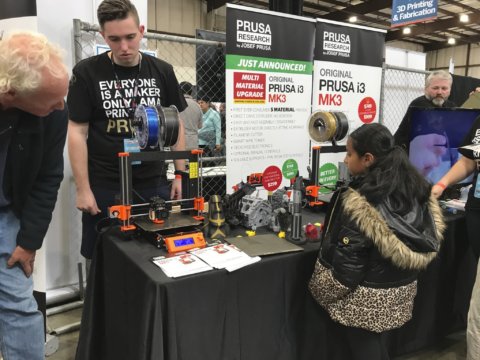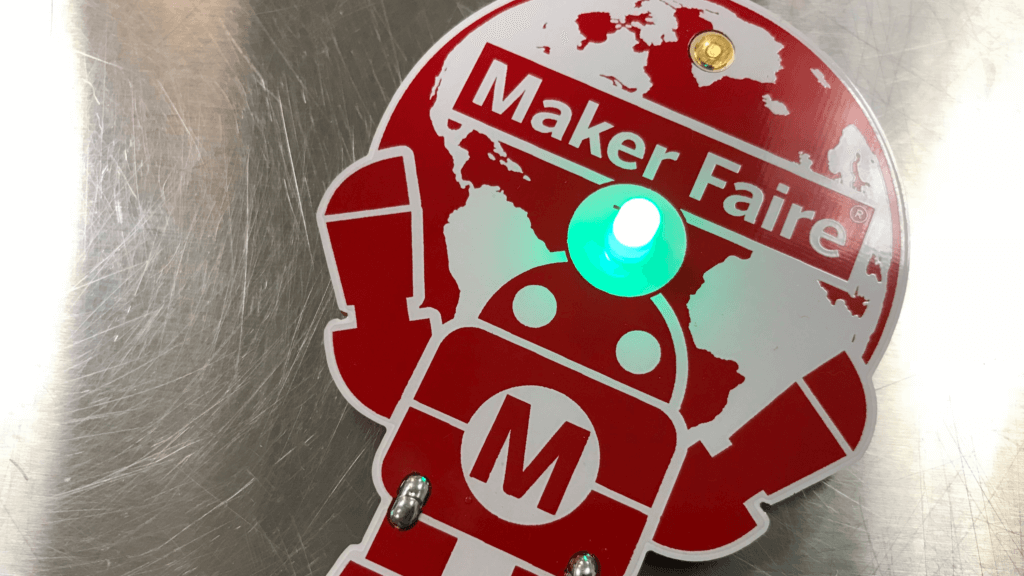My son and I were excited to leave our misty, cool, fogged-in-paradise, known as the Sunset District for the potentially sweltering heat and direct sunlight of San Mateo. The Maker Faire has been taking place at the San Mateo Fairgrounds since 2008. I was thrilled and grateful that the library had secured a ticket for Makers Lab staff development, information, and learning.
Over 100,000 people attended the Maker Faire in San Mateo this year. All of the core Makers Lab staff were able to attend. The weather was surprisingly chilly and gray, unlike previous years. The enthusiasm from the attendees was immense as always. Regardless of temperature, the passion to view and interact with the exhibitors, makers, and creators from attendees was remarkable to see. It may sound contrived but there was a true excitement “in the air” from all the folks strolling around.
Our Makers Lab staff saw a plentiful amount of exhibits and ideas. I will focus on just three ideas that are already being used since the Maker Faire; in the Makers Lab or that can potentially be utilized in the future.
STEM to STEAM
This year the Maker Faire shifted its focus from STEM to STEAM. The A in the acronym stands for Art. The core of ideas at the Maker Faire is now including Art in its already present Science, Technology, Engineering, and Mathematics focus. The emphasis within the Makers Lab has always been creativity. We want this core value to continue within the space. Clearly UCSF is focused on science and medicine. It is amazing, however, to see how rousing it can be for someone to escape their research for a bit and delve into an artistic project. Inevitably some of the art activities in the space will include medical and/or science minded attention. It is fascinating however to examine people in the Makers Lab that have slipped away from their labs, offices, and cubicles and are savoring a moment to unwind. They may not even be cognizant of the fact that they are unwinding and breathing as they print a 3D object for their lab work, etc. It is also nice to see a UCSF community member come into the space who wants to print a “fun” 3D print. Although they are thinking initially that they are not really learning with a “fun” print, of course they are able to learn how to use the 3D printing programs and printers themselves in order to print the object. It is pleasing to see the blend of those wanting to have a strictly research minded focus and those with the idea of having a fun approach. Both groups crossover into each other’s side of thought without necessarily intending to do so.

Vacuum
Months before the Maker Faire took place, I spoke with my colleague Jenny in the Makers Lab about the idea of a good vacuum forming machine for 3D prints in the space. I will quote Jenny directly here regarding her interaction with an innovative group who had a table at the Maker Faire.
“On the vacuum forming side, I visited a table where a Japanese company was demoing not only the vacuum form, but also let me know of the process they used to colorize the vacuum formed result. They created really cool fruits by printing the color picture onto clear plastic sheets with an inkjet printer and vacuum forming it on top of existing plastic. This has been exactly what I was looking for in potentially colorizing some of the 3D scans in particular because the scans give you the texture maps.”
This is especially intriguing to me that this was a query on how to form color on 3D prints, of my colleague months before the Maker Faire. At the same time she was pondering, a group in Japan had contemplated the same idea and were able to present a colorful, potential solution.

Prusa 3D Printer
Our staff in the Makers Lab had already decided to order a Prusa 3D printer before the Maker Faire. The print has flexible and removable metal print bed that was displayed at the Prusa booth at the Maker Faire. This print bed can be easily removed and the print “shimmied” off when the metal is slightly bent. This has eliminated the need to use a tool to pry a print off the print bed.

Conclusion
The Maker Faire nucleus idea is that collaboration and creativity leads to innovation. It is nice to see this happening at the Maker Faire and to be conscious of the fact that we enjoy this in the Makers Lab as well. There can be UCSF community members working on individual projects within the space, who engage with each other and as they communicate are inspired to collaborate and learn from each other’s ideas.
Experimenting in the Makers Lab is extremely beneficial to our members. We do not “make” the project for our patrons. Makers Lab staff are here to assist but encourage folks to do it themselves. I witnessed this with some makers at the Maker Faire. Some exhibitors were glad to let folks experiment, learn, and make with the supplies they had on hand for participants.
I am very much looking forward to returning next year and every year after. Although there is clearly a difference in size between the Makers Lab space within the Library and the massiveness of the San Mateo County Fairgrounds, there is a similarity in ideas and activities. Again I am thankful to have been able to participate in the Maker Faire and bring ideas back to our space here within the UCSF Library. The Makers Lab continues to grow with visitors and ideas being generated as the Maker Faire continues to do the same.
